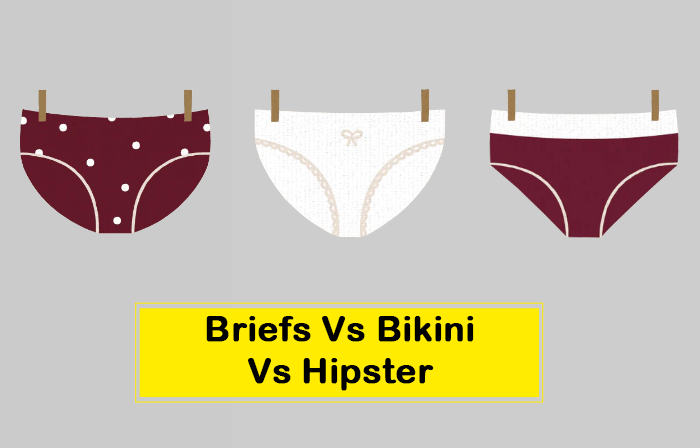Content Menu
● 1. Defining the Styles: Core Features and Use Cases
>> Briefs
>> Bikinis
>> Hipsters
● 2. Material Selection: Performance and Sustainability
● 3. Manufacturing Insights for OEM Brands
>> Design Workflow
>> Quality Control
● 4. Market Trends Shaping 2025 Collections
● 5. Styling and Marketing Strategies
>> Photography & Content
>> Collaborations
● 6. FAQs for Brands
>> Q: What's the minimum order quantity (MOQ) for custom designs?
>> Q: How do I choose between nylon and polyester?
>> Q: Can I integrate sustainable materials without raising costs?
>> Q: What's trending in swimwear prints for 2025?
>> Q: How do I ensure sizing consistency across regions?
● Conclusion
● Citations:
Choosing the perfect swimwear or underwear involves balancing comfort, style, and functionality. For brands seeking OEM manufacturing partners, understanding these nuances is critical to meeting consumer demands. This article explores the differences between briefs, bikinis, and hipsters, while incorporating design trends, material innovations, and actionable insights for creating standout collections.

1. Defining the Styles: Core Features and Use Cases
Briefs
Briefs prioritize full coverage and support, with a high-rise waistband that sits at or above the natural waist. Ideal for everyday wear, they pair seamlessly with high-waisted outfits and cater to those seeking modesty.
Key Innovations: Modern briefs now feature laser-cut edges and moisture-wicking fabrics, blending comfort with performance[3][7].
Bikinis
Bikinis offer a low-rise fit with high-cut leg openings, emphasizing a sleek, minimalist aesthetic. Popular in swimwear lines, they dominate beachwear collections due to their versatility in prints like tropical florals and geometric patterns[1][5].
Trend Alert: String bikinis and bandeau tops remain timeless, while longline bikini tops (extending down the torso) bridge the gap between one-pieces and traditional two-pieces[2][7].
Hipsters
Hipsters strike a balance with mid-rise waistbands and wider side panels for hip coverage. Their adaptability makes them a favorite for casual and active wear, especially in athleisure-inspired designs[3][5].
2. Material Selection: Performance and Sustainability
Material choice impacts durability, comfort, and brand alignment. Below is a comparison of popular fabrics:
| Material | Benefits | Best For | Sustainability |
| Nylon/Spandex | Stretch, chlorine resistance | Performance swimwear | Recyclable options (Econyl®)5 |
| Polyester | Fade resistance, affordability | Everyday briefs/hipsters | Recycled blends available |
| Organic Cotton | Breathability, softness | Eco-friendly underwear | Biodegradable |
| Terry Cloth | Absorbency, textured feel | Resortwear/cover-ups | Low environmental impact |
Eco-Friendly Shift: Over 60% of leading swimwear brands now integrate recycled materials like Econyl® (regenerated nylon) to reduce waste[5][7]. Highlighting sustainable practices can attract environmentally conscious partners.
3. Manufacturing Insights for OEM Brands
Design Workflow
1. Concept Development
- Identify gaps in the market (e.g., demand for high-waisted bikinis or sporty hipsters)[1][7].
- Use mood boards to align designs with trends like abstract prints or vintage revivals[3].
2. Prototyping
- Combine custom designs with ready-to-wear templates to reduce costs[3].
- Test fabrics for elasticity and colorfastness, especially for chlorine-resistant swimwear[3][7].
3. Production
- Opt for seamless stitching to minimize chafing in bikinis and hipsters.
- Offer mix-and-match sets (e.g., interchangeable tops and bottoms) to maximize SKU flexibility[7].
Quality Control
- Conduct fit tests across body types to ensure universal comfort.
- Implement 4-point inspection systems for stitching and dye consistency[3].
4. Market Trends Shaping 2025 Collections
- Versatility: Swimsuits doubling as bodysuits (e.g., paired with linen shirts or skirts) dominate resortwear[4][6].
- Bold Aesthetics: Animal prints, neon hues, and asymmetrical cuts are rising in demand[5][7].
- Inclusivity: Extended sizing (XXS–4XL) and adaptive designs (e.g., adjustable straps) cater to diverse audiences[1][6].
Industry Growth: The global swimwear market is projected to reach $68.74 billion in 2025, driven by personalized designs and sustainable practices[7].
5. Styling and Marketing Strategies
Photography & Content
- Use diverse models to showcase fit across body types[6].
- Create videos demonstrating swimwear's versatility (e.g., beach-to-bar transitions)[6].
Collaborations
- Partner with influencers to showcase styled looks (e.g., bikinis with board shorts or midi skirts)[4][6].
- Offer custom prints for limited editions, leveraging platforms like Fourthwall for on-demand production[7].
6. FAQs for Brands
Q: What's the minimum order quantity (MOQ) for custom designs?
A: MOQs typically start at 500–1,000 units, but some OEMs offer lower thresholds for hybrid collections[3][7].
Q: How do I choose between nylon and polyester?
A: Nylon offers superior stretch for swimwear, while polyester suits cost-sensitive underwear lines[3][5].
Q: Can I integrate sustainable materials without raising costs?
A: Yes! Recycled fabrics are now price-competitive, with Econyl® costing just 8–10% more than virgin nylon[5][7].
Q: What's trending in swimwear prints for 2025?
A: Tropical motifs, retro polka dots, and watercolor abstracts are top sellers[1][7].
Q: How do I ensure sizing consistency across regions?
A: Provide detailed size charts and consider regional preferences (e.g., Asian vs. EU sizing)[3][7].
Conclusion
For OEM manufacturers, mastering the nuances of briefs, bikinis, and hipsters—from material innovation to trend-driven design—is key to capturing the booming swimwear market. By aligning with sustainability goals, leveraging versatile styling, and adopting agile production methods, brands can position themselves as leaders in this dynamic industry.
Citations:
[1] https://www.printful.com/blog/how-to-start-a-swimwear-line
[2] https://www.masterclass.com/articles/types-of-swimsuits
[3] https://brydenapparel.com/your-complete-guide-to-swimwear-manufacturing/
[4] https://www.vogue.com/article/swimsuit-outfits
[5] https://azbigmedia.com/lifestyle/fashion/how-swimwear-trends-are-influencing-the-fashion-industry-a-game-changer-in-modern-style/
[6] https://www.abelyfashion.com/how-to-market-your-swimwear-business-a-comprehensive-guide.html
[7] https://fourthwall.com/blog/how-to-start-a-swimwear-line-design-and-sell-custom-swimwear-online
[8] https://thefashionbusinesscoach.com/blog/startaswimwearline
[9] https://baliswim.com/how-to-start-your-own-swimwear-bikini-swimsuit-line/
[10] https://www.fortunebusinessinsights.com/swimwear-market-103877
[11] https://fashionangelwarrior.com/how-to-design-your-own-swimwear-line-the-basics/
[12] https://www.starterstory.com/ideas/swimwear-line/marketing-ideas
[13] https://fashionista.com/2024/04/swimwear-bathing-suits-trends-2024
[14] https://baliswim.com/11-step-swimwear-business-plan-template/
[15] https://www.prcouture.com/pr-social-marketing-tips-swimwear-covid/
[16] https://www.globalgrowthinsights.com/market-reports/swimwear-market-106142
[17] https://www.thesewingretreat.co.uk/post/learn-how-to-pattern-cut-and-sew-your-own-swimwear
[18] https://www.pinterest.com/ideas/swimwear-content-ideas/951415088613/
[19] https://www.reddit.com/r/femalefashionadvice/comments/flmt6m/ultimate_swimsuit_guide_2020/
[20] https://stylegd.s3-us-west-2.amazonaws.com/Style+Guide+-+Swimwear.pdf


































